Content of the article
- /01 What is a commercial offer?
- /02 Types of commercial offer
- /03 Stages of creating a commercial proposal: step-by-step instructions
- /04 The structure of the commercial offer that sells
- /05 What is the difference between CP for B2B and B2C
- /06 How to strengthen the commercial offer
- /07 Examples of commercial proposals
- /08 Where to find business proposal templates
- /09 To summarize

In today’s world, there is a lot of competition in almost every niche, so getting quality attention from potential customers and converting them into real ones is not an easy task. One of the ways to do this is to create an attractive commercial proposal (CP), which is the first step towards fruitful cooperation and mutually beneficial partnership.
In the article, we will analyze what a CP is, how to write it correctly, and what to take into account when writing it so that it works as it should. We will also familiarize ourselves with the samples that can be used to speed up the creation of a CP.
What is a commercial offer?
A typical commercial proposal is, as a rule, a letter (in other words, a text document) that describes the product and conditions for cooperation with benefits for a potential partner or client. Sometimes they use audiovisual format, video presentation or other instead of text.
Mandatory elements of CP are:
- clearly formulated terms of potential cooperation;
- advantages and benefits of cooperation with the company that sends the CP;
- expected result.
The right eye-catching commercial proposition includes text and graphics that follow the principles of copywriting that sells and UX/UI design, respectively. It is also possible to add comparison tables, photos and other elements that will create more trust. As an example, here is part of the CP of the WEDEX agency.
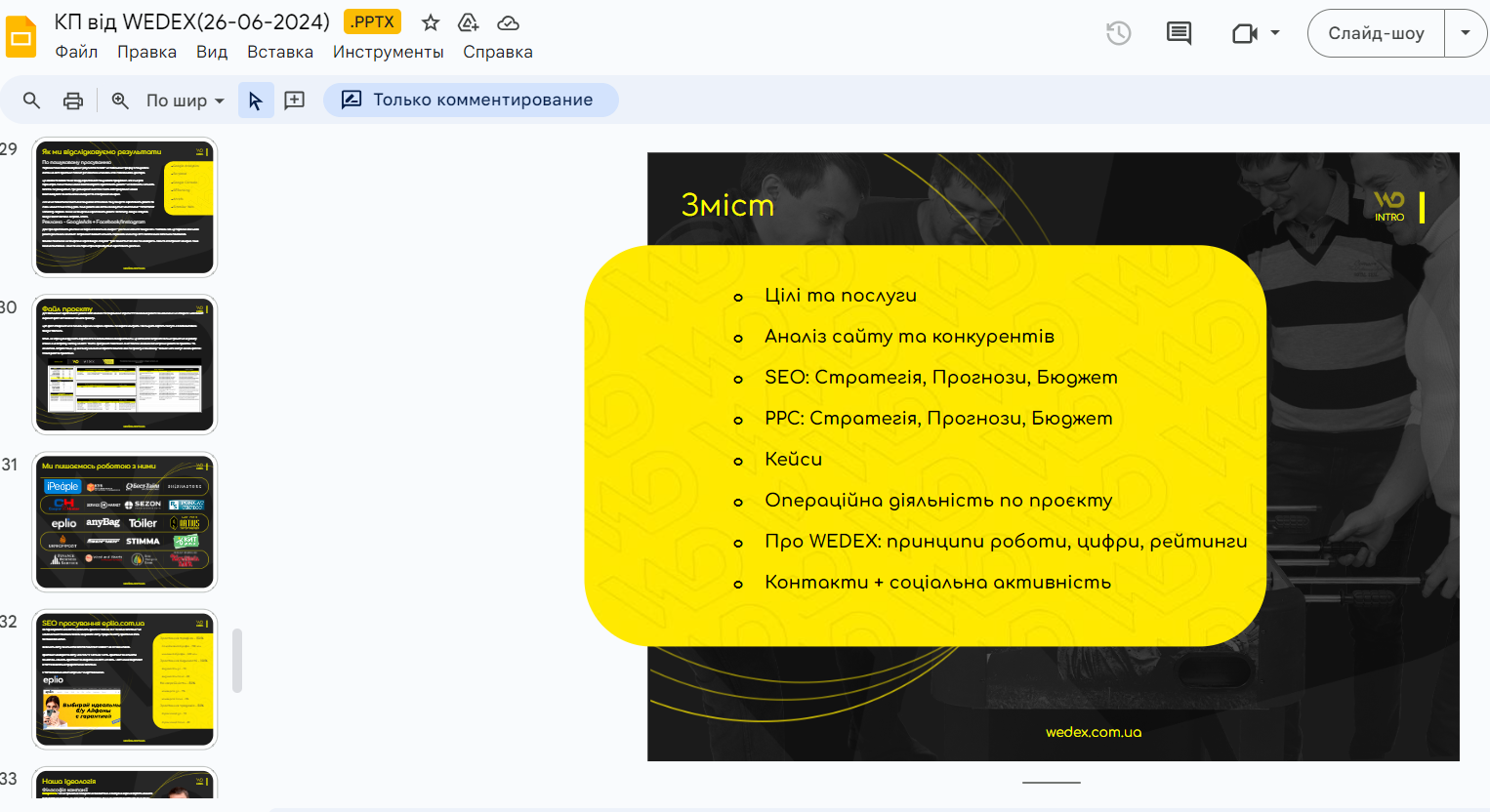
The CP is delivered personally to hands during a business meeting or, which currently happens more often, it is sent to e-mail or regular – by letter.
Types of commercial offer
Some marketers distinguish only 2 types of CP, but we will consider 4, because each of them has its own specifics.
Type 1. Cold CP
This letter is intended for a broad audience that may be potentially interested in the proposal. Such a typical commercial offer is usually large in volume and contains a maximum of information to interest the recipient and encourage further consideration of the company for cooperation.
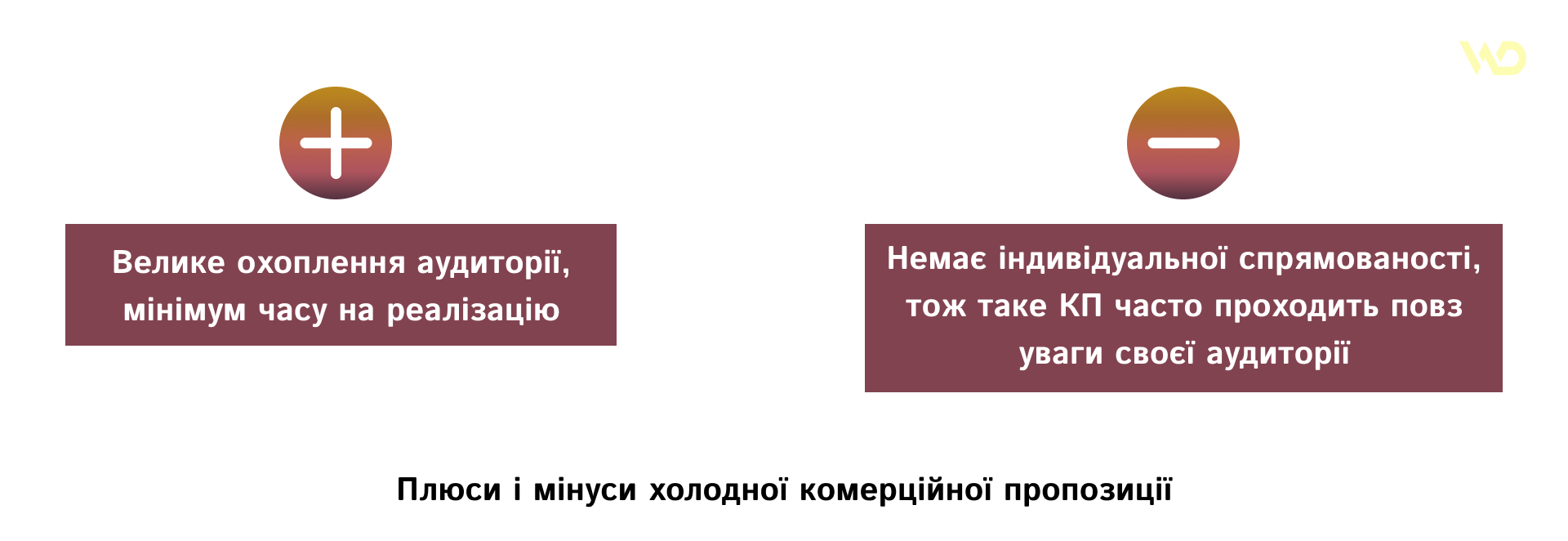
Type 2. Warm (or combined) CP
This CP is for those users who are already familiar with the sender. Perhaps he showed interest while on the site, called with questions, ordered services or goods earlier, but for some reason stopped. Given the fact that the person already knows the company, the letter will be smaller, more personalized and contain a more specific offer.
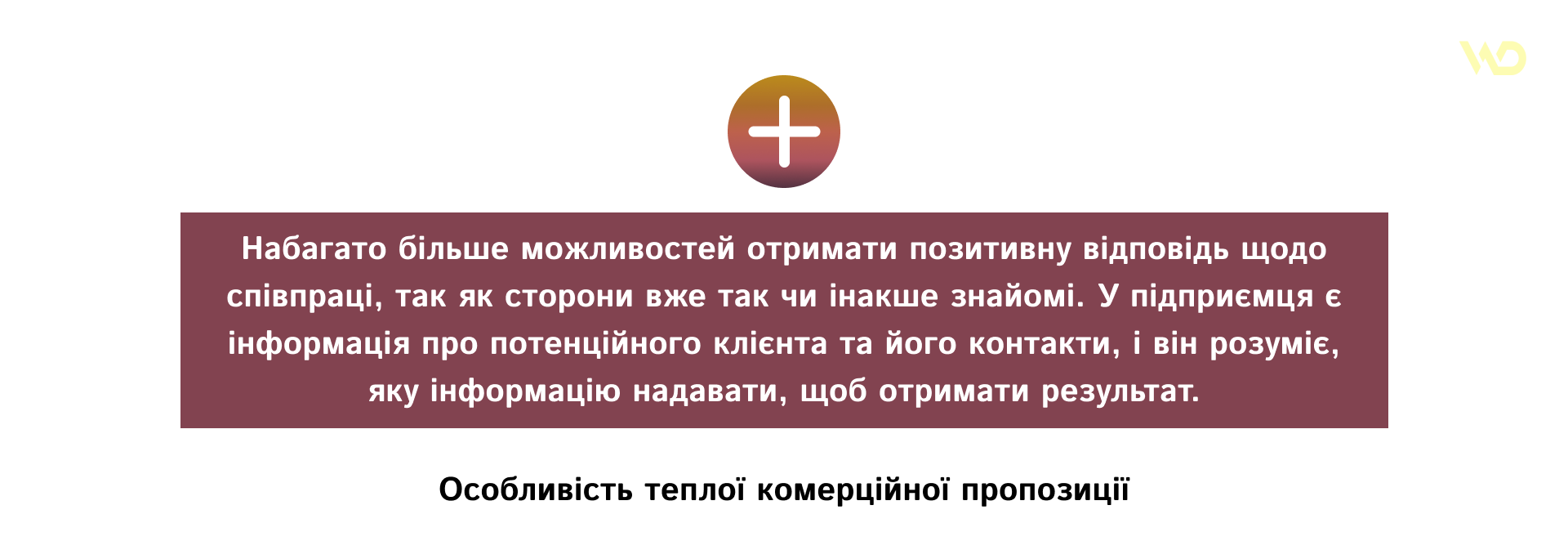
Type 3. Hot CP
Such a letter contains only specifics and is sent exclusively at the request of a future client. The seller and the buyer have already communicated by phone, via messengers, e-mail or offline meetings and achieved certain results. Therefore, the time has come to send such a typical commercial proposal, where there is no extra information and the recipient’s needs are clearly taken into account.
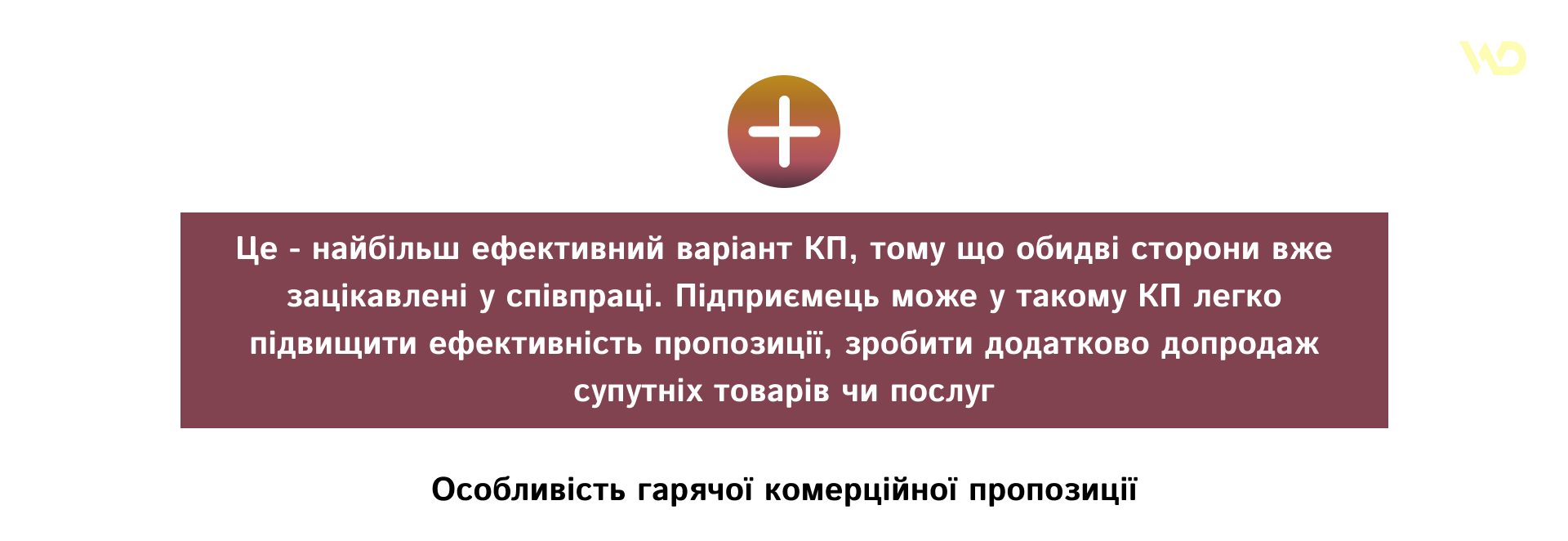
Often, but not always, after sending a hot commercial proposal, the company will call to discuss the details.
Type 4. CP-“resume”
If the potential client did not purchase the offered item even after a hot CP and telephone discussion, then it is worth creating such a summary proposal. In it, write down all the points that were discussed earlier, remind about the advantages of concluding an agreement, provide a step-by-step plan for the next steps to start cooperation, and thereby encourage a purchase.
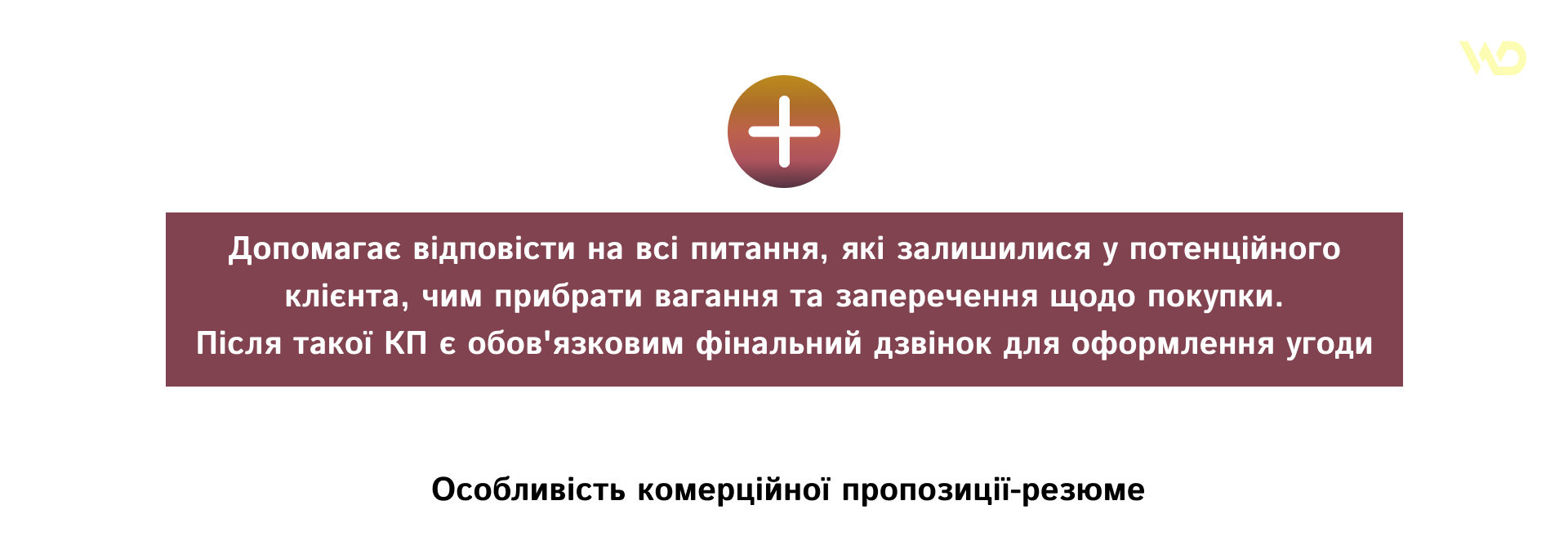
Stages of creating a commercial proposal: step-by-step instructions

You need to be able to offer your services or products correctly, so let’s see how to do it.
1. Develop a clear and understandable structure of the commercial proposal that closes all questions and objections.
2. Compose the text part of the letter that should convey the value of the offer.
The following points are mandatory:
- company logo and contacts;
- a flashy headline that it essentially is UTP (a unique trade offer);
- a paragraph of 1-2 sentences describing the entrepreneur’s problem;
- the main paragraph describing the proposal;
- call to action
We will analyze each item in more detail below.
3. Work on the design of the CP.
A visually appealing typical business letter will work much better than plain text. Highlight important data and present it in infographics, tables or pictures. Hardly anyone will want to read a long text, but small paragraphs alternating with bright visuals – with pleasure.
To create, you should use the services of a designer or make a design yourself using:
- PDF editor;
- PowerPoint programs;
- Canva or similar services;
- site builder, where to add all the information, for example, Wix.
As a rule, the standard design for CP is done as for most normal presentations.
The structure of the commercial offer that sells
For a typical commercial offer to work, certain elements must be added to the structure. The basis should be:
1. Headline that grabs attention and encourages further reading of the letter.
It is this text that the addressee sees first when he receives your letter in the mailbox, so it is worth thinking about it in advance. For example, it can be:
- TOP-3 reasons why you should use this offer/product;
- Our company (the name of your company) enriched N clients in 2024;
- You cannot refuse this.
2. A lead that clearly highlights your prospect’s problems.
The more accurately you describe the problems and pain points an entrepreneur face, the faster you will gain trust. After all, this will show that you really understand your client and can help him.
To take this step, you need to study the client’s portrait, analyze his lifestyle, business conduct, possible problems he has already encountered or may encounter in the future, motivation, dreams, desires.
3. Offer and detailed description of the property.
In the main part of the letter, you need to give answers to all the questions and objections that can be raised by the potential client and write the offer – the meaning of your offer. Also concisely give complete information about your product.
Remember, the more concrete and clear the benefit will look for your potential buyer, the easier it will be for you to sign a Cooperation Agreement with him.
Add a list of benefits that the entrepreneur receives from working with you and reasons why your company should be trusted. But note that, although this part will be the most voluminous, it must be without water.
4. Call to action.
A typical business proposal has a logical conclusion in the form of 1-2 sentences that encourage further actions. That is, we clearly indicate what a potential customer should do after reading the commercial offer: call, send a response by e-mail or regular mail, to calculate the price of the offered product, or something else.
Of course, this is a basic list and it may differ from the final appearance of your CP depending on the specifics of the product. For example, CP for B2B and B2C will be different.
What is the difference between CP for B2B and B2C
First, let’s understand what is the difference between these models of commercial relations.
- B2B (business to business) is when one entrepreneur sells his products to another. An example of the “business-business” format of cooperation is Suzuki Motor Corporation, a company producing sports motorcycles. For its activities, it needs brake pads, oil seals, shock absorbers, filters, mufflers, tires and much more, and gets it from other, less well-known companies that manufacture all these parts.
- B2C (business to consumer) is a “business to client” format. Suzuki Motor Corporation sells motorcycles to end consumers.
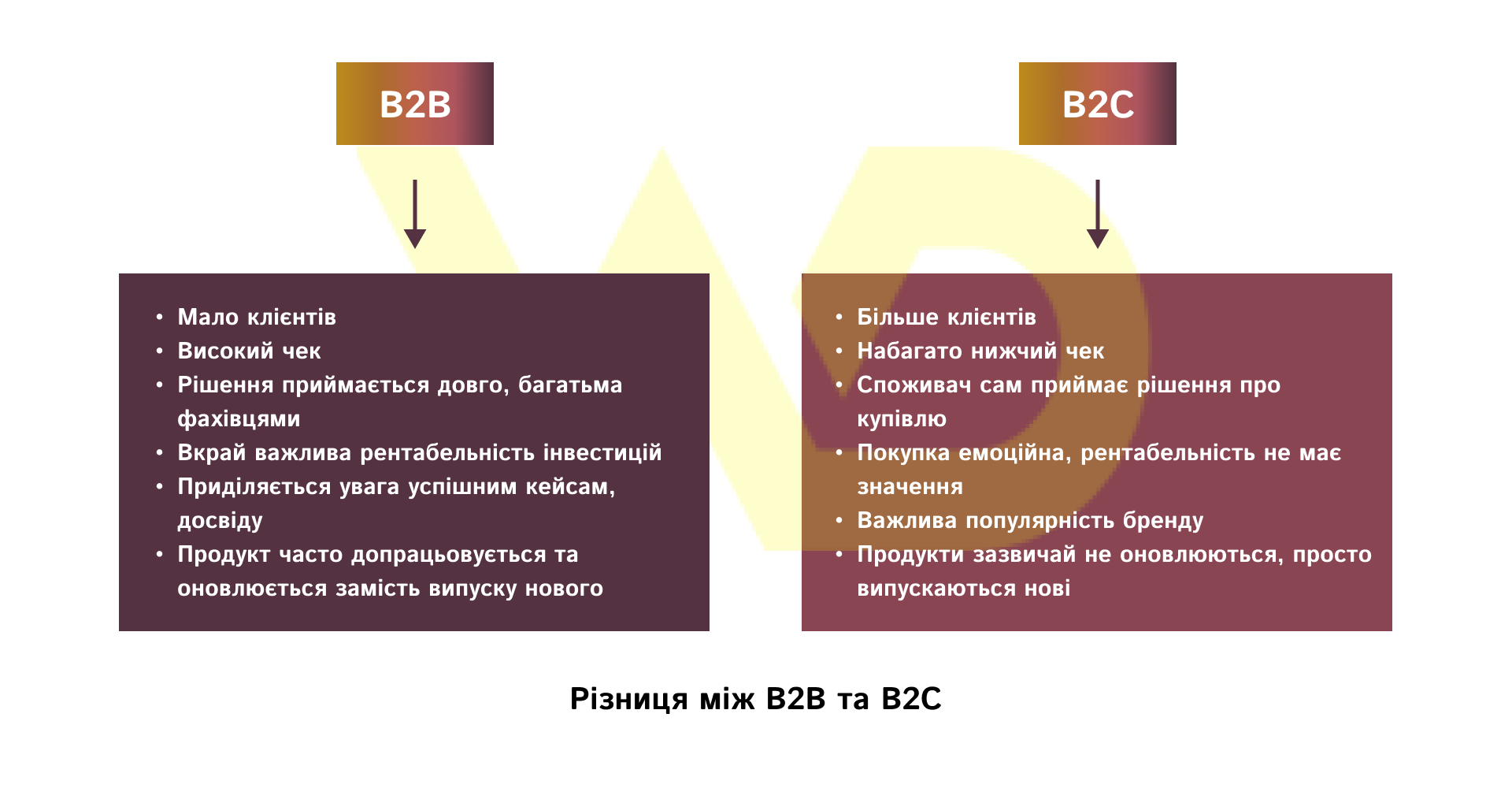
A feature of the commercial offer for B2B
The main purpose of sending a standard CP for the Business-to-Business cooperation format is to calculate long-term cooperative work that will be beneficial to all participants in the process. Here in the letter, the main thing is to establish contact with the recipient company, to arouse interest in your proposals and ideas for facilitating and improving its work. Decision-making takes much longer than in B2C, because different specialists usually participate in the discussion of the future Contract, and not just the owner or director of the company.
The decision is made for a long time, because the proposal is examined in great detail, all possible risks and benefits of the work are weighed. Sales volumes in B2B are small, but a high check from cooperation is worth the wait and careful preparation of CP for future partners.
A feature of the commercial offer for B2C
Business-to-Consumer (sometimes abbreviated as Business-to-Customer) is, unlike Business-to-Business, fast sales. An entrepreneur sells his product or service to the end consumer, who is often guided in his choice by personal preferences, rather than a pragmatic approach.
It is in the B2C format when promoting a product that it is important to conduct informal marketing communications, talk to the buyer as easily as possible and, in some sense, entertain him.
Buying decisions are often impulsive, emotional, so B2C sells a lot and quickly. There are many leads here, but there is one “but” – the checks are much lower than in the B2B format.
Therefore, a typical commercial proposal for B2B should be more balanced, contain the maximum number of rational arguments for the need for joint work, justify high return on investment and benefits, and for B2C it should be easy to perceive, demonstrate obvious benefits of buying “here and now” and be attractive to a large number of leads.
How to strengthen the commercial offer
If you have already completed your CP, then check it on 5 points and strengthen it if necessary to get exactly the desired result after sending.
- Time is worth its weight in gold, save it for the recipient.
Remember that not everyone has a lot of time to read in detail every letter that comes to e-mail, messenger or social network. Eyes first of all find headlines and only if they are interesting, a person will read further. Visual highlighting of important information and added graphic elements also have a positive effect on the amount of time you are willing to devote to your letter. - Personalize your letter.
Find out and analyze the specifics of the company or specific person where you plan to send your CP. Today, anyone who receives a lot of calls and messages every day can clearly see if they have received an ordinary spam message, like hundreds or even thousands of other recipients. And, of course, does not read it. Only by prescribing and closing in the letter the pains and desires of a specific consumer of your product or service will you get a chance for cooperation. Offer your product not to everyone in a row, but only to those who will really benefit from it. - The wrapper always comes second.
Yes, design is important and should not be neglected. But if the content is weak, the text is unconvincing, short and “one-size-fits-all”, then no design will help close the deal. - Do not expect a WOW effect from the mailing.
Above, we have already analyzed the types of commercial offer and when it is sent to the client. However, it is worth remembering that typical cold CPs do not always produce an effect in the form of a queue of people wishing to order goods or use services. So a commercial offer is just one way to promote your product. Use it as a supplement, not the main one. - Consider: does your product really need a full-fledged CP?
If you work in the B2B segment, drawing up a commercial offer is mandatory, but for B2C it is optional. But even an ordinary message to users on a social network needs to be written correctly, so all the advice on drafting a CP is still relevant.
Regarding a full-fledged commercial offer, we will give one piece of advice: treat the mailing as one of the sales tools. If it works, that’s good, but if it doesn’t, just look for other ways to interact with potential customers.
Examples of commercial proposals
Unfortunately, most often there are commercial offers that look like a normal Word file and attached files. Let’s look at examples of letters from CP and how they can look.
Here is a general template with a typical simple design that you can take as a basis.
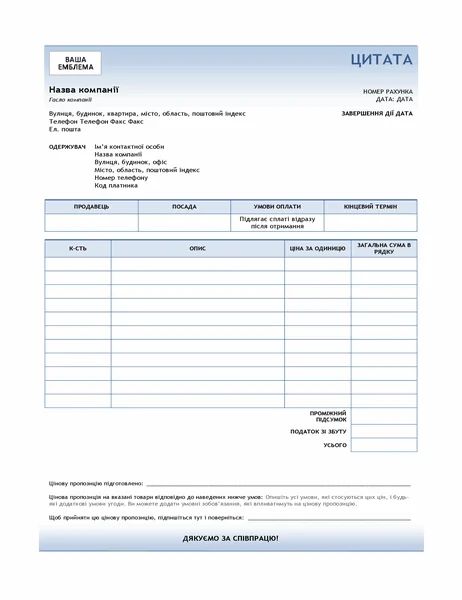
And here is a typical sample of a commercial offer for the supply of goods.
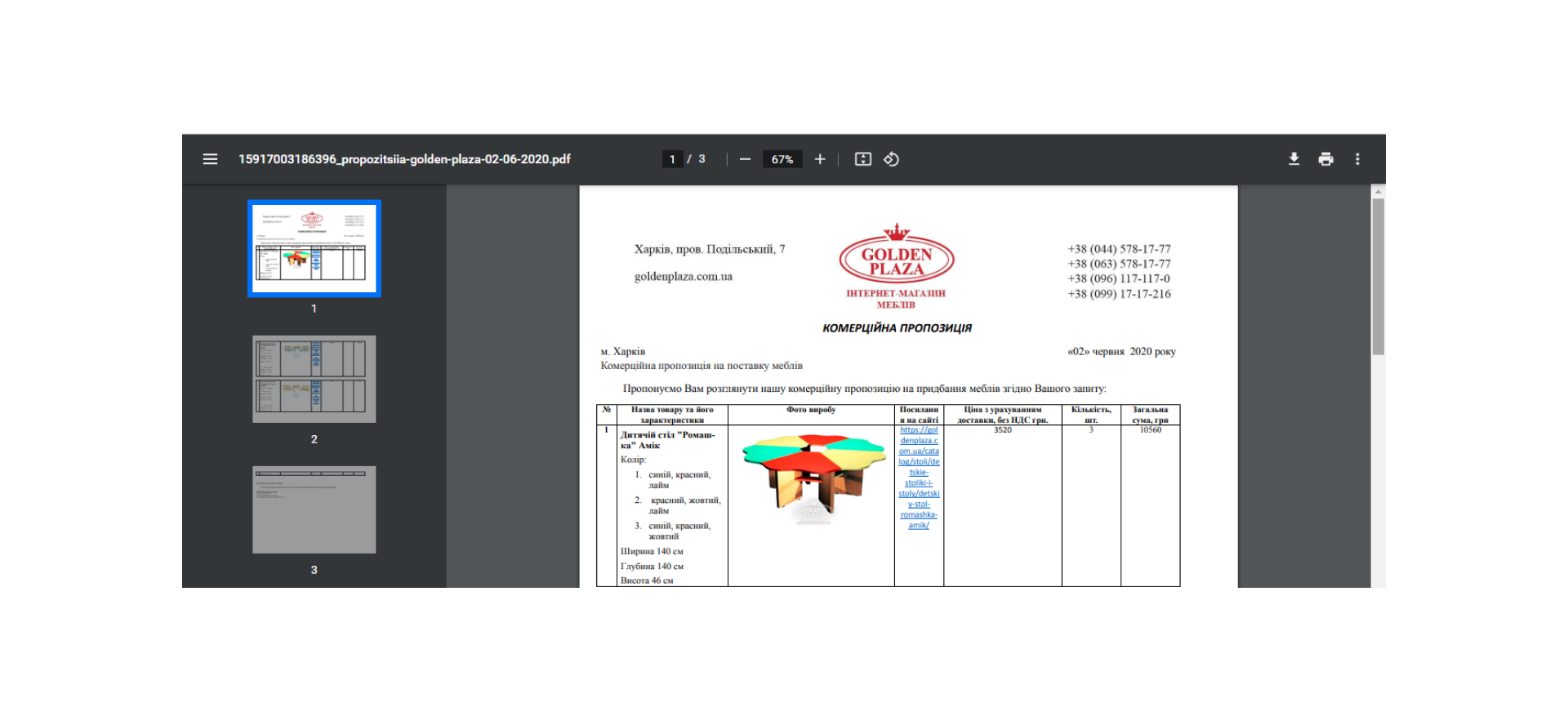
A sample commercial proposal for services looks like this.
Where to find business proposal templates
There are several good sites that can help you speed up a typical CP. Or, if a commercial offer already exists, see examples and, if necessary, adjust your offer.
- Marketplace of contracts and legal services online YurHAB, where you can find a lot of different templates for any kind of collaboration. This portal is interesting because the samples are published by lawyers.
- Graphic design tool vistacreate. You can start with a blank sheet or choose a template that you like and easily adapt it to your project.
- A platform for online design and visual communication CANVAS also offers templates for commercial proposals with ready-made solutions for their design.
To summarize
There are not as many qualitatively prepared typical commercial offers on the Ukrainian market as we would like. But the better, because you can make your offer taking into account the samples and templates provided in this article, according to all the rules, and thereby distinguish your company from the competition.
Competently composed text part after studying the characteristics of your partners and potential customers and visual appeal will make this tool powerful and after testing and necessary improvements will help to increase the level of sales.
Don’t waste time on drawing up the right CPs and finding an individual approach to each consumer of your product or service – and you will be the only one to sign profitable Contracts.







 08/08/2024
08/08/2024  4334
4334

